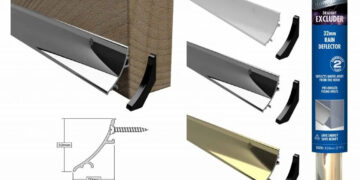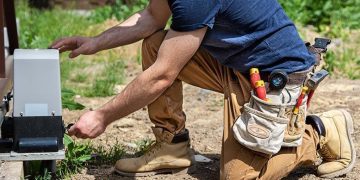Microcement has become one of the most sought-after finishes in modern interior and exterior design, thanks to its seamless look, versatility, and durability. Whether you’re planning a minimalist bathroom, a stylish kitchen floor, or an industrial-inspired commercial space, microcement can elevate your surfaces with a sleek, contemporary finish. But to truly get the best out of this material, hiring the right microcement installer is essential.
In this guide, we’ll walk you through everything you need to know to find a skilled and reliable microcement installer for your next project.
Why Choosing the Right Installer Matters
Microcement is a highly specialised product that requires experience and precision during application. Unlike tiles or traditional flooring materials, microcement is applied in thin layers and must be handled with care to achieve the desired texture and finish. A poorly executed installation can lead to uneven surfaces, cracks, or premature wear.
By choosing a qualified and experienced installer, you ensure:
-
A high-quality, long-lasting finish
-
Proper surface preparation and application
-
Reduced risk of issues like peeling or bubbling
-
A professional look that enhances the value of your property
Step 1: Do Your Research
Start by researching local microcement installers. Use search engines, social media platforms, and directories to find businesses or independent professionals who specialise in microcement. Look for those with a clear focus on this niche area rather than general builders or decorators who offer it as an add-on.
Check for:
-
A professional website
-
An active presence on Instagram or Pinterest with project photos
-
Reviews and testimonials from past clients
-
Mention of microcement training or brand partnerships
The more experience an installer has, the more likely they are to deliver excellent results.
Step 2: Ask the Right Questions
Once you’ve found a few potential installers, contact them to discuss your project and ask some key questions. These should help you assess their knowledge and approach.
Important questions to ask:
-
How many years have you been working with microcement?
-
What brand(s) of microcement do you use, and why?
-
Can I see a portfolio of recent projects?
-
What preparation is required before application?
-
How long will the job take, and what’s the drying/curing time?
-
What kind of maintenance does your microcement finish require?
A professional installer should be able to confidently answer these questions and provide clear information.
Step 3: Review Their Portfolio
A strong portfolio is one of the best indicators of an installer’s capability. Look for variety in their work—have they done bathrooms, kitchen counters, walls, and floors? Do the finishes appear smooth, clean, and consistent?
Pay attention to:
-
The precision of the edges and transitions
-
The range of colours and textures they’ve worked with
-
Before-and-after images showing the transformation
-
Client testimonials attached to the photos
It’s also helpful to ask if you can visit a previous project in person or speak directly with a past client.
Step 4: Get a Detailed Quote
A professional microcement installer should offer a detailed quote that includes:
-
Surface preparation (cleaning, priming, levelling)
-
The number of microcement layers
-
Protective sealant coats
-
Labour and materials costs
-
Estimated timeframe
-
Warranty or aftercare guarantees
Beware of quotes that are unusually low. While price is an important factor, extremely cheap quotes may reflect poor-quality materials or rushed workmanship. Always prioritise quality over cost, especially for high-traffic areas or commercial spaces.
Step 5: Check for Training and Certification
Many microcement brands provide certified training for installers. Ask your potential installer if they’ve completed any accredited courses or are approved by a particular microcement manufacturer. This adds credibility to their expertise and ensures they’re up to date with best practices.
Brands like Topciment, Forcrete, Ideal Work, or BT Microcement often have certified installer networks. Working with someone trained by a recognised brand means they understand the product’s specific mixing ratios, application process, and sealing requirements.
Step 6: Understand the Aftercare
Microcement requires minimal maintenance, but it’s important to understand the proper cleaning and care instructions. A reputable installer will:
-
Provide guidance on cleaning products to avoid
-
Offer advice on resealing timelines
-
Recommend mats or pads to protect floors from furniture wear
-
Explain what to do if damage occurs
Some installers even offer maintenance services or kits for long-term upkeep.
Red Flags to Watch Out For
Avoid installers who:
-
Have no visible portfolio or online presence
-
Struggle to answer basic questions about the material
-
Use generic construction terms instead of microcement-specific language
-
Push for a fast timeline that seems too good to be true
-
Don’t provide a written contract or detailed quote
Choosing the wrong installer can be costly in the long run, so trust your instincts and don’t rush the decision.
Final Thoughts
Microcement is a stunning, modern material that can completely transform the look and feel of your home or business. However, the quality of the installation is just as important as the product itself. By doing your research, asking the right questions, and carefully reviewing each installer’s experience and work, you’ll be well on your way to a successful microcement project.
Remember: great results start with great craftsmanship. Take the time to find the right microcement installer, and you’ll enjoy beautiful, durable surfaces for years to come.














































